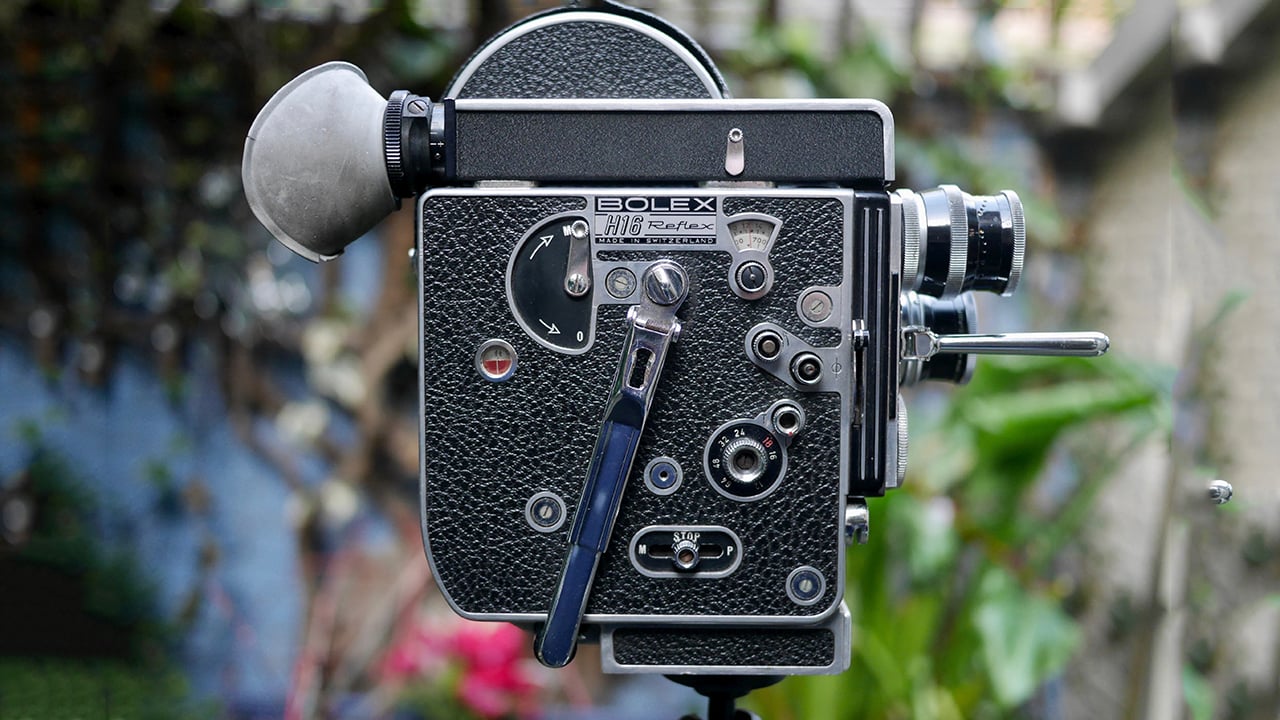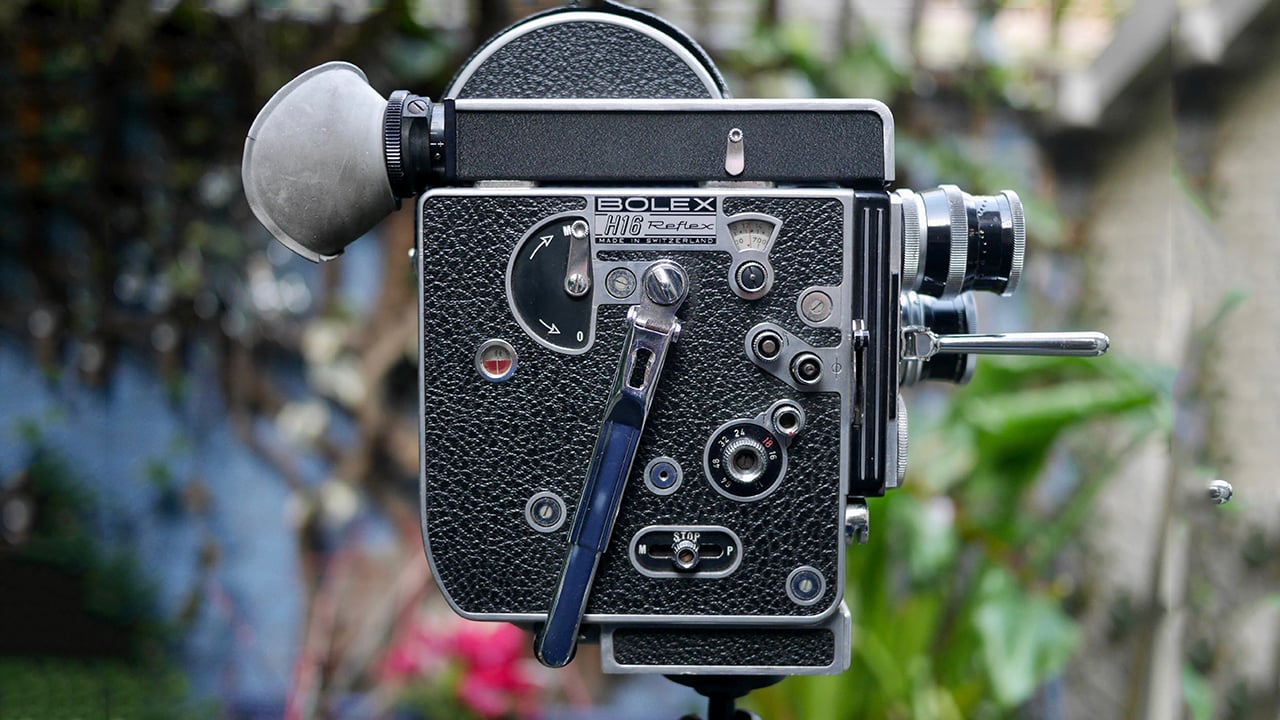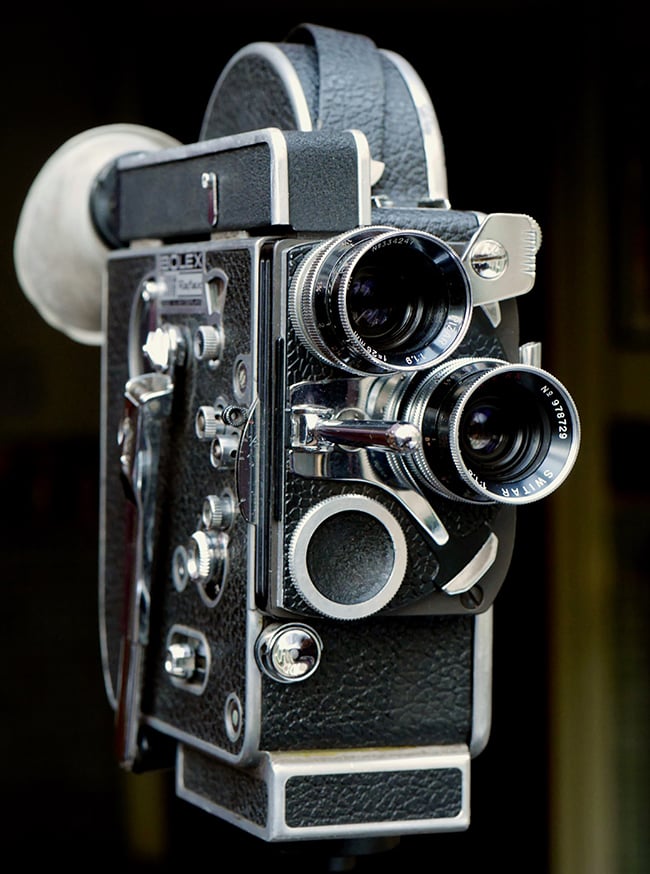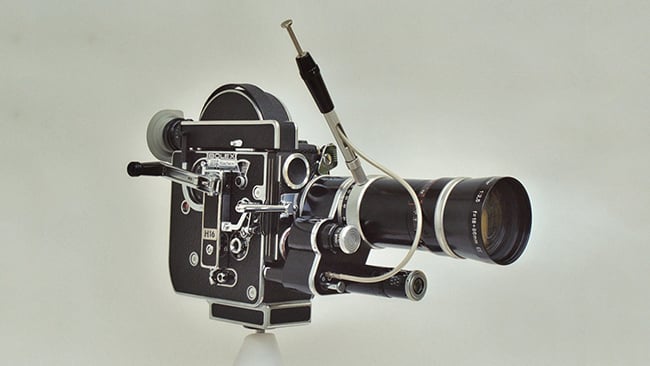
Here's another chance to read Roland Denning's definitive look back at some of the most influential cameras that eventually lead us to the point we are at today.
 The Bolex H16 film camera
The Bolex H16 film camera
The evolution of film and video cameras over the last 120 years is a fascinating subject – few other key pieces of technology today have that mix of innovation and tradition, combining the most advanced technology available with standards and mechanical principles established at the very beginning of the 20th Century.
I thought it would be interesting to look at the cameras that have really been game changers, decade by decade. Now I have to be honest – I’m a filmmaker, not a historian and this is as much about my own interest in cameras as it is a strict historical record. So this is going to be a rather biased story.
The movie camera was invented just before the turn of the century but I’m not going back that far.
I’m going to jump in at the 1930s – the decade when talkies became the norm and established the format that was to dominate the rest of the century. A 35mm movie from 1930 could still be shown in cinemas today – if you can find one that hasn’t thrown away their film projectors.
There were many huge and important 35mm studio cameras in this era, but I’m going to bypass all of those and go to the other end of the spectrum, to a camera that I have actually used – in fact, I started my career with it. What’s more, this camera, first manufactured in 1933, is perhaps the only motion picture film camera (albeit to special order only) still being made today. Very few precision, mechanical devices of any sort, let alone cameras, have lasted that long. And that, in itself, means it deserves a place on this list.
 The authors beloved H16
The authors beloved H16
The Bolex H16
The camera is the 16mm Swiss-made Bolex H16. It continued to be a popular camera well into the 1980s. Every college that taught film would have one and many are still in use today. With its chrome trims and leatherette panels, it looked like a device an Edwardian scientist might have devised. The reasons for its popularity are obvious: it was cheap, precision made, versatile, reliable, abundant and could produce high-quality pictures. It was the first camera for many generations of filmmakers.
The Bolex H16 was, of course, clockwork. Yes, electric models followed and some H16s could be fitted with an external electric motor, but in its classic and most common form, it was driven by a wind-up spring motor. The motor was wound by an extendable chrome-plated crank that, when disengaged, would clip neatly back to the camera body. The camera would run for around 20 seconds on one wind – this clearly had an effect on the type of films that you could make with it. To focus your mind on shot length, you could activate an ‘audible signal’ that made a click approximately (but not precisely) every second. But this wasn’t a camera for long takes anyway – the total running time of a 100’ 16mm spool is less than three minutes at 24fps.
Variable speeds
The H16 had an unparalleled combination of features that made it perfect for scientific and experimental filmmakers. It had variable speeds (12 to 64 fps) and, importantly, not only would it take single frames with variable exposure times, but you could actually use a time exposure on a single frame. I once shot an experimental film using exposures of up to 20 seconds per frame, using the movement of actors within that exposure to create a series of expanding and collapsing blurs. It was the first choice for many animators – Aardman Animations, for instance, started their business with a Bolex H16 on a tripod facing a lump of Plasticine (the UK equivalent of Play-Doh).
The H16 had a backwind key and a frame counter so you could wind back and create multiple exposures on the same piece of film. It also had a variable shutter that, unusually, could be adjusted during a shot to create a fade. An add-on mechanical device called the REX-fader, linked the variable shutter to the drive motor, enabling you to do an automated fade out, wind back and then do an automated fade in on the next shot, creating an in-camera dissolve. A rather wonderful gadget, that, again, I believe was unique to the Bolex.
Most versions of the H16 had a C-mount lens mount on a 3-lens turret, making switching lenses almost instant – a great feature which, unfortunately, would probably be impossible to engineer economically on today’s cameras. Behind the lens was another feature that is rarely seen on other cameras – a filter slot that could take a small gelatine filter, a precursor to the filter wheels that became standard on professional video cameras decades later.
Reflex model
In 1956, the H16 became a reflex camera but, unlike cameras like the Arriflex, it did not do this through a mirrored shutter, rather it put a prism behind the lens that directed some of the image to the viewfinder. This meant you had a flicker-free image, but you also lost about a third of a stop of light going to the film (it was standard to compensate by setting your exposure meter to 1/80 rather than 1/50 second). Moreover, the image in the viewfinder was small and very dim.
 The later Bolex H16 Reflex film camera - Image created by Stylianos Karavias Hoverfish
The later Bolex H16 Reflex film camera - Image created by Stylianos Karavias Hoverfish
Let’s be honest – the Bolex H16 was noisy, awkward to hold and had a terrible viewfinder. Even though later electric versions enabled you to shoot sync sound and add a 400’ magazine, it was far too noisy and clumsy for regular documentary or drama shoots. Nevertheless, this was a camera that started the careers of many filmmakers. The simplicity, robustness and versatility of the Bolex made it a wonderful training tool. Having three fixed lenses, rather than a zoom, encouraged students to think about focal lengths and the lack of sync sound and the impossibility of long takes was a very useful discipline to teach the basic mechanics of filmmaking. For experimental filmmakers, it was a sort of compact, magical laboratory. It was, perhaps, the Land Rover of movie cameras – although, in comparison, the classic Land Rover lasted a mere 67 years.
Digital H16 reinvention
The Bolex was iconic enough to be reinvented as a digital camera in 2011 but it lasted for only 5 years, unlike the original H16’s 85 years plus. The Digital Bolex had no connection with the original Swiss manufacturers (although it had their approval) but it was a valiant attempt to produce a versatile, low-cost workhorse in the spirit of the original. It was marketed as a documentary camera – not really the original Bolex’s forte, as I said above. It had a C-mount lens and an optional pistol grip, like the original Bolex, and offered a global shutter and output uncompressed 12-bit files – unique at the time. The Digital Bolex could never compete with mass-produced digital video and stills cameras, but fans claimed it offered an ‘organic’ image quality (I really have no idea what that means). The truth is, I am not sure what would be a digital equivalent of a Bolex H16 in today’s world – if you are talking about a low-cost, versatile camera that can take a range of lenses and start a journey into filmmaking, probably the closest thing would be a camera like a Panasonic GH4 or GH5. But it really is impossible to imagine a camera today that would be in use one decade let alone eight decades later.
So there we have it. The magnificent but quirky Bolex H16. If you are intrigued and have $5.5k to spend, you can order a brand new spring-driven Bolex H16SBM body from Switzerland today.
Be sure to come back next Sunday for part 2 of this series.
Tags: Production


Comments